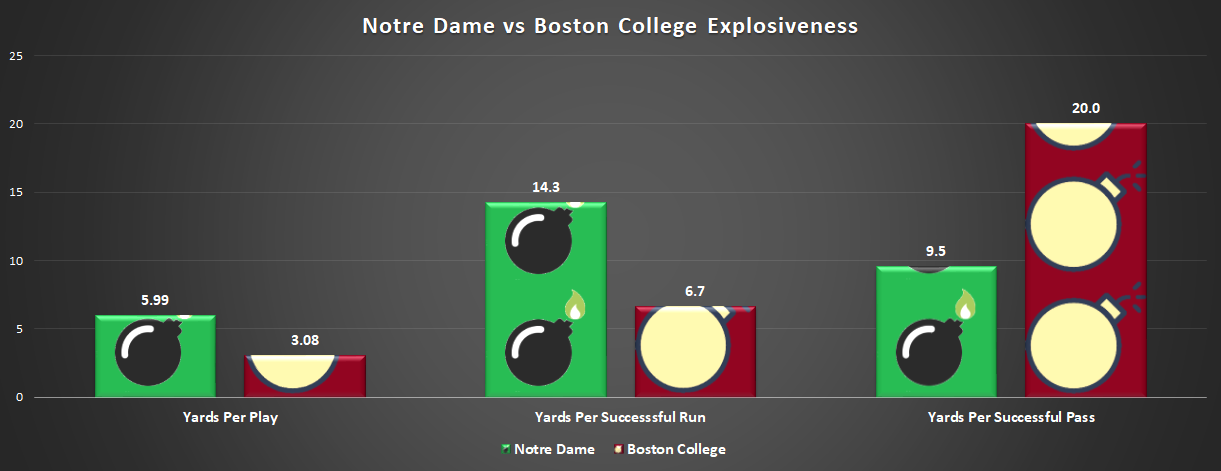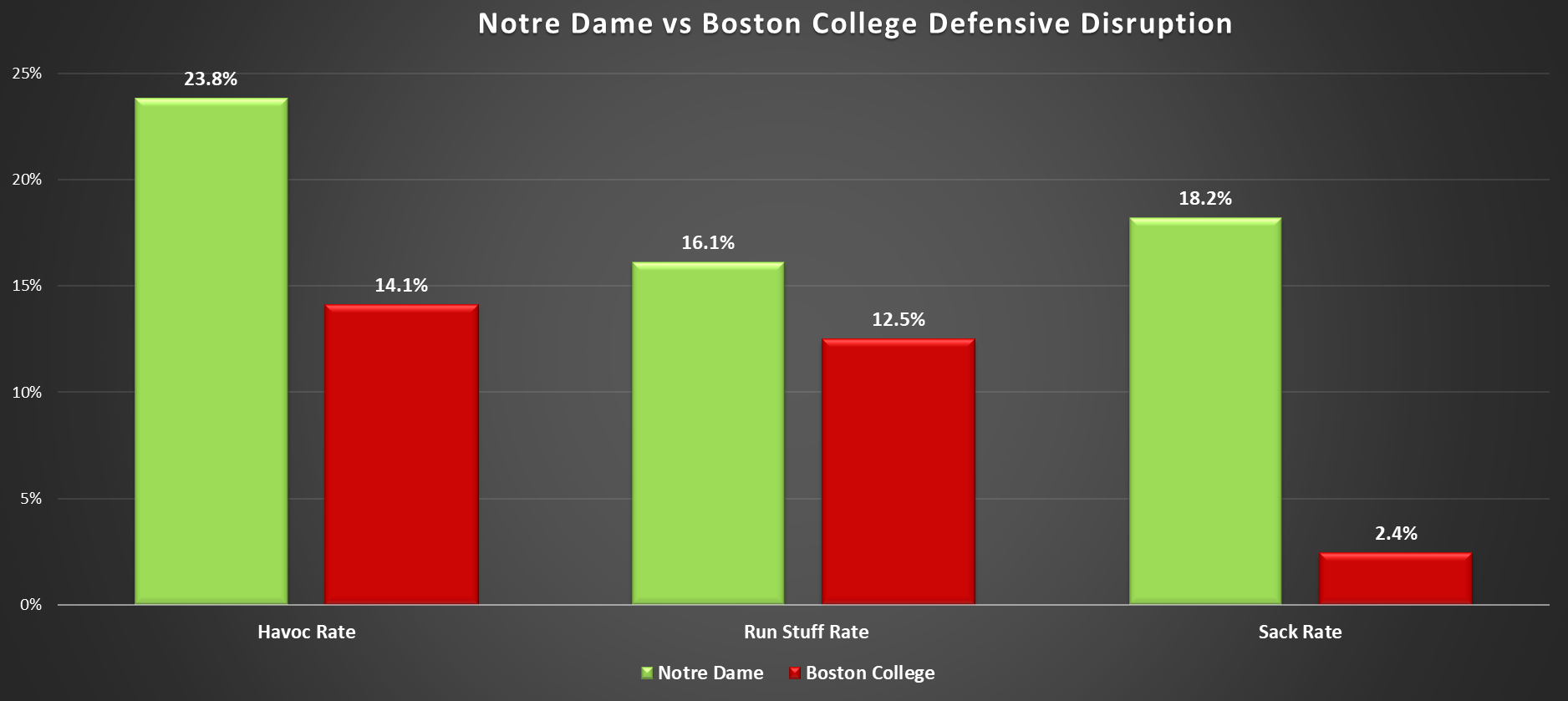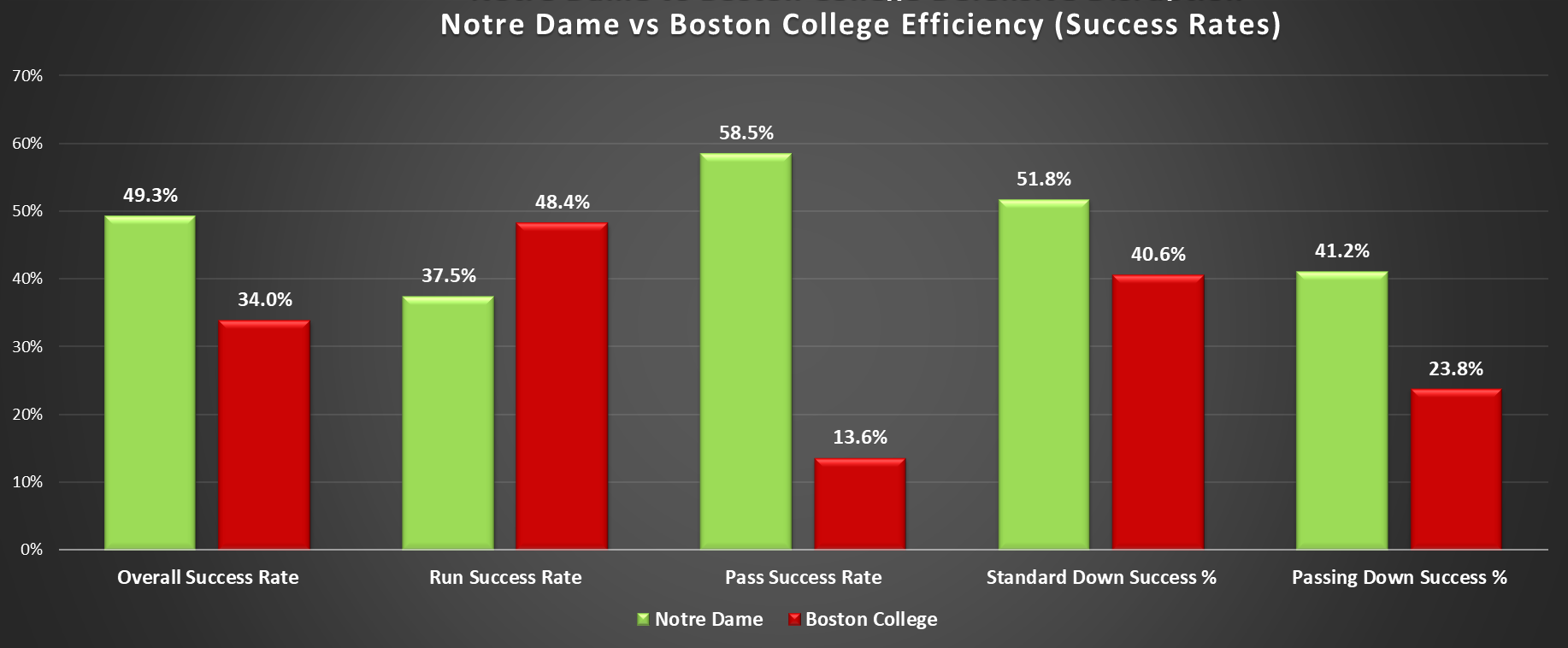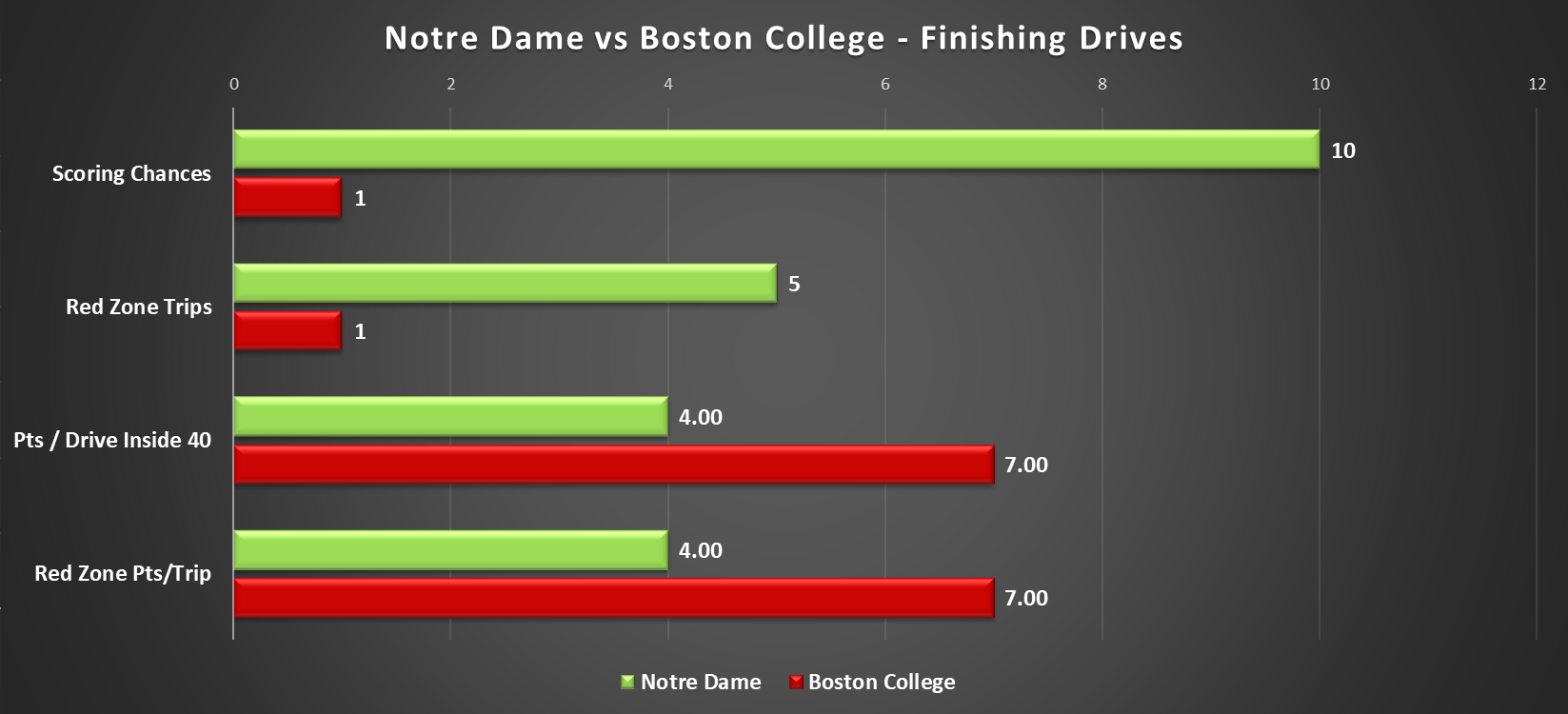A dominant defensive effort led Notre Dame to a 40-7 route of Boston College that could have been an even bigger blowout on senior day. The Irish offense created nine scoring chances in ten drives before garbage time compared to just one all game for BC. But the ND offense settled for four field goals and was forced to punt once due to penalties. Examining an extremely efficient but short-gain passing attack, a run game led by non-running backs, and the impossibility of succeeding with a one-dimensional offense against Clark Lea.
Something not clear? Check out this handy advanced stats glossary.
Garbage time plays excluded from play by play analysis began when Ian Book and the 1st team offense exited the contest with a 40-7 lead in the 4th quarter. 15% of plays are thrown out as garbage time.
Explosiveness

While Boston College was without starting QB Anthony Brown, they’d still fared well with Dennis Grosel filling in against non-Clemson defenses. Yielding only about three yards a play was a Clemson-level performance by the Irish defense, containing a dangerous rushing attack to just two 10+ yard gains while also rendering AJ Dillon and David Bailey inefficient. The play-action passing attack with Grosel had been an explosive complement for the Eagles, but the Irish defense held them to just one long connection and three successful plays in 22 pass attempts (including sacks).
The Irish weren’t as explosive as usual either, with the highlight-reel exception of Braden Lenzy’s 61-yard scamper. But that long TD was one of only four gains of more than 15 yards despite successes on 36 of 73 plays before garbage time. The BC defense was disruptive early against a thin ND offensive line and gave the Irish offense a taste of their own medicine with some bend but don’t break defense.

At the end of the day, the explosive differential is still relative and the Irish defense was impenetrable as the game went on. From the start of the second half (with the score surprisingly tight at 16-7) until garbage time Lea’s defense allowed 1.5 yards per play with a long gain of 8 yards. The Eagles offense had a longer loss from the line of scrimmage (a sack to lose nine yards) than gain in that 24-play stretch!
Efficiency

One of the most efficient passing days of Book’s career led the Irish to a huge efficiency advantage despite below-average run success. The Boston College run game had a surprisingly efficient day yet as soon as the Eagles were forced into passing downs, they were doomed.
The biggest outstanding question for the last two contests of 2019 and for an offense that should return a ton of core pieces next year is the running game. Chip Long cobbled together an attack that on paper tallied 6.44 yards per run attempt with just slightly below average efficiency. Yet that’s inflated by Lenzy’s big touchdown and Book running well with 6.7 yards per carry on 11 attempts (45% success rate).
Irish running backs averaged just 3.55 yards/carry with a 30% run success rate and continue to offer next to no explosive threat. It’s an intertwined problem between backs with physical limitations battling injuries and the right side of the offensive line down two starters. But the running back production was still questionable even with Kraemer and Hainsey healthy. Expect the Irish to continue to lean on Book as a run threat and a few carries a game to Lenzy and Keys to mitigate this weakness in Palo Alto and the likely Orlando bowl game.
Finishing Drives, Field Position, & Turnovers

If Notre Dame had put on a typical red zone clinical 50 or 60 points were attainable with ten scoring opportunities. The first six scoring chances with a 1st down inside the BC 40 produced just 19 points though. There doesn’t seem to be much cause for concern – there were some uncharacteristic drops and penalties involved. Still, a little bit of what could have been to hang a 50-burger on Boston College on Senior Day.
How do you score 40 yet leave the feeling many more points were there for the taking? Tremendous field position was the answer last weekend, as the Irish had an advantage of nearly TWENTY yards per possession. Notre Dame had five possessions start in Boston College territory; in contrast, BC’s best starting field position was their own 35-yard line, and their second-best was their own 26. It was a massive advantage for the Irish offense that made manufacturing scoring chances far easier.
Notre Dame welcomed a small bit of luck in the turnover department with a 2-0 advantage the advanced stats saw more likely as a +1 margin. BC recovered one of their two fumbles, and both teams had four pass breakups, but only the Irish came away with an interception despite a few ill-advised throws by Book.




“The Eagles offense had a longer loss from the line of scrimmage (a sack to lose nine yards) than gain in that 24-play stretch!”
Damn!